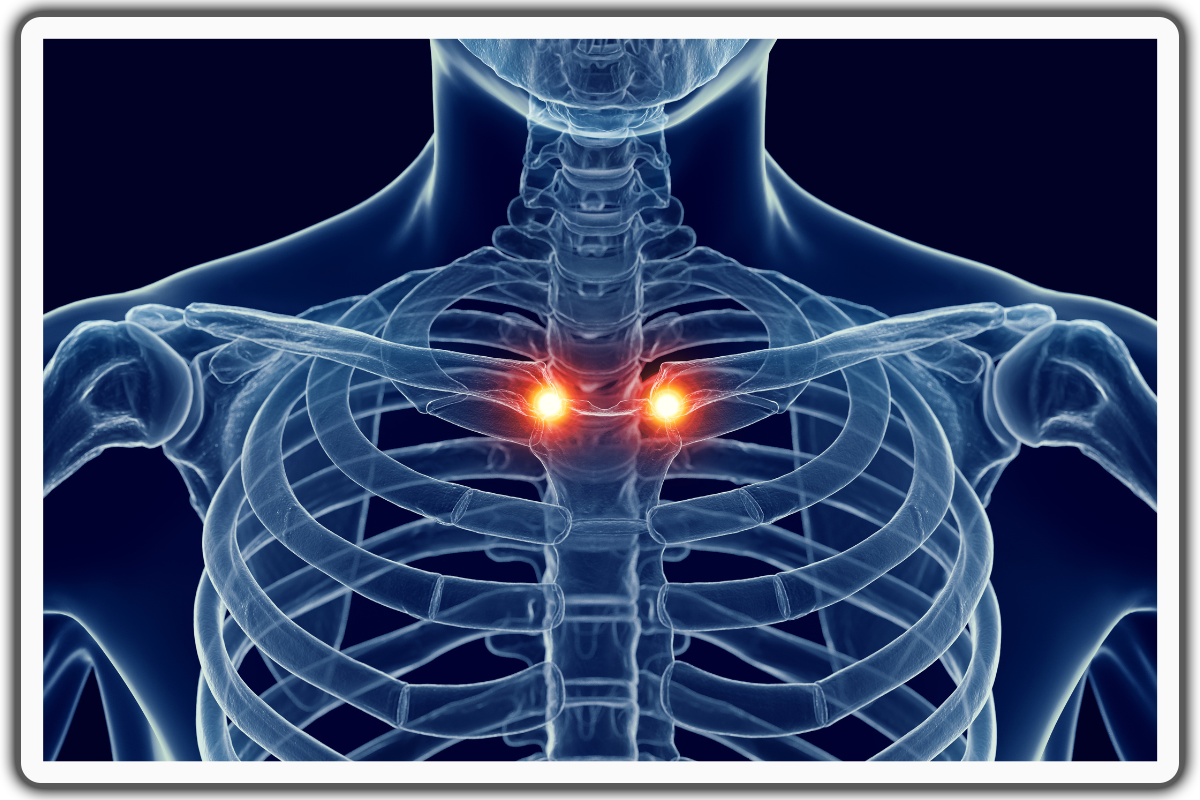
Top 5 Best Exercises for Costochondral Joint Pain
Costochondral joints, where the ribs connect to the cartilage, can cause chest pain when inflamed. Understanding the causes, symptoms, and ways to find relief can help manage this common but often misunderstood condition.
What are Costochondral Joints?
The costochondral joints, located in the thoracic wall, link the sternal ends of the ribs to their respective costal cartilages. These joints are primary cartilaginous joints (synchondrosis), where bones are joined by hyaline cartilage. There are ten pairs of these joints, one for each rib from 1 to 10 and their corresponding costal cartilages.
Location, Function and Use
The costochondral joints are located in the thoracic wall, where the bone ends and cartilage begins.
They allow the front ends of the ribs to connect flexibly to the sternum, enabling slight bending and twisting movements that help the chest expand during breathing.
The costochondral joint (CCJ) [¹] is often used to fix damaged jaw joints in children to help their jaw grow and work properly. However, it's rare for the jaw to grow smoothly and evenly after using a rib graft.
Costochondral grafts use rib cartilage [²] and bone to rebuild the nasal bridge and tip, avoiding issues with bone-only grafts. This method is effective for nasal deformities from birth defects, injuries, or previous surgeries. It offers a reliable and stable way to improve nose appearance and function with fewer complications.
Introduction to Costochondral Joint Pain or Costochondritis
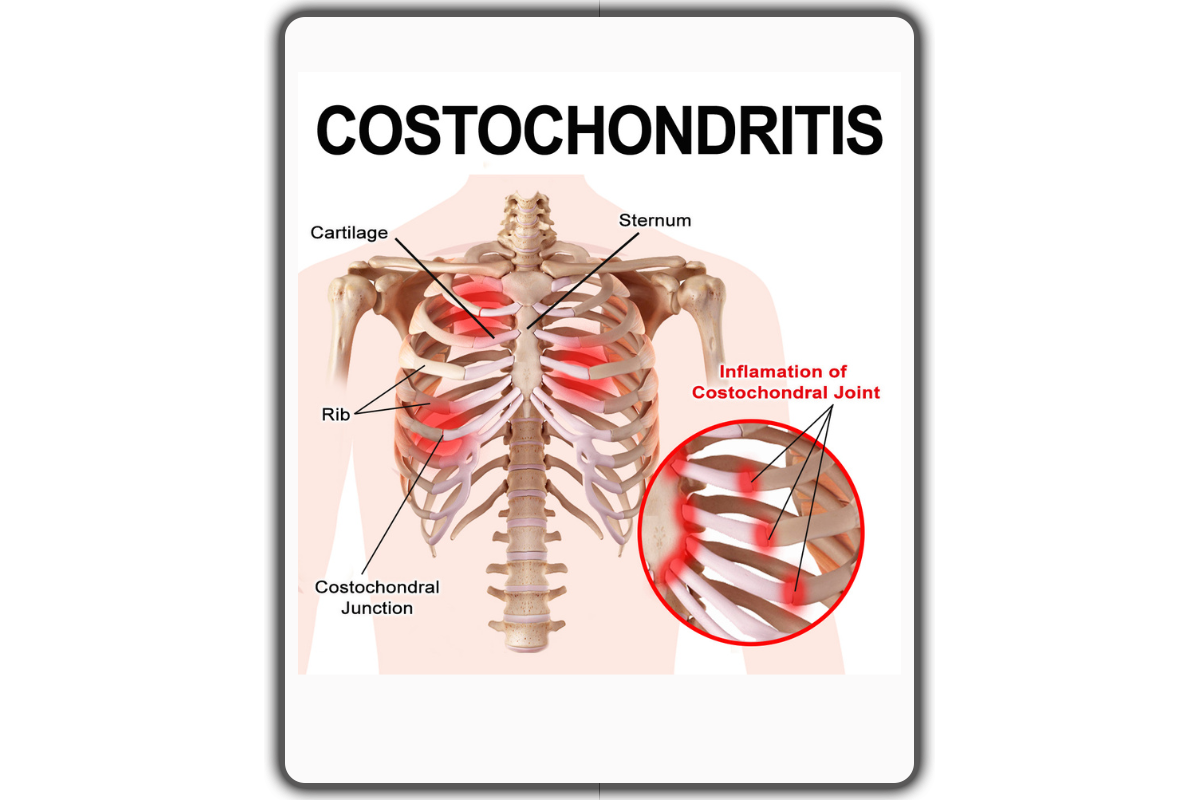
Costochondritis is when the cartilage that links your ribs to your breastbone gets inflamed, leading to chest pain. It's often mistaken for a heart attack but is typically harmless. The pain can worsen with physical activity or deep breathing. It usually resolves on its own but can recur.
Costochondritis is most common in middle-aged people [³] (ages 40-50), with women (69%) more affected than men (56%).
What are the Causes of Costochondritis?
The exact cause of costochondritis is often unclear, but several potential causes and contributing factors include:
Trauma or Injury: A blow to the chest or severe coughing can lead to costochondritis.
Physical Strain: Heavy lifting, strenuous exercise, or activities that strain the chest muscles can contribute to the condition.
Infections: Respiratory infections or other infections can sometimes lead to inflammation of the costochondral junctions.
Arthritis: Certain types of arthritis, such as rheumatoid arthritis or ankylosing spondylitis, can affect the joints in the chest.
Tumors: Rarely, tumors in the chest area, either benign or malignant, can cause costochondritis.
Repetitive Activity: Activities that involve repetitive movement or pressure on the chest wall can cause costochondritis over time.
Symptoms of Costochondral Joint Pain
Symptoms include:
Sharp, aching, or pressure-like pain in the chest area
Pain that worsens with deep breathing, coughing, or physical activity
Tenderness when pressing on the rib joints
Pain that radiates to the back or abdomen
Discomfort that may come and go or persist for days to weeks
Fever and fatigue may be associated with costochondritis.
Acute trauma to the costosternal or costochondral joint from an injury to the front of the chest can lead to sudden and severe pain in the costal cartilage area. Costochondritis is a common cause of chest wall pain [⁴] for patients in emergency rooms, especially among women and Hispanics.
5 Best Exercises for Costochondral Joint
Exercises for costochondritis are crucial for reducing discomfort, improving flexibility, and enhancing overall chest mobility. Regular gentle exercises can help manage pain and prevent future flare-ups.
1. Scapula Squeeze
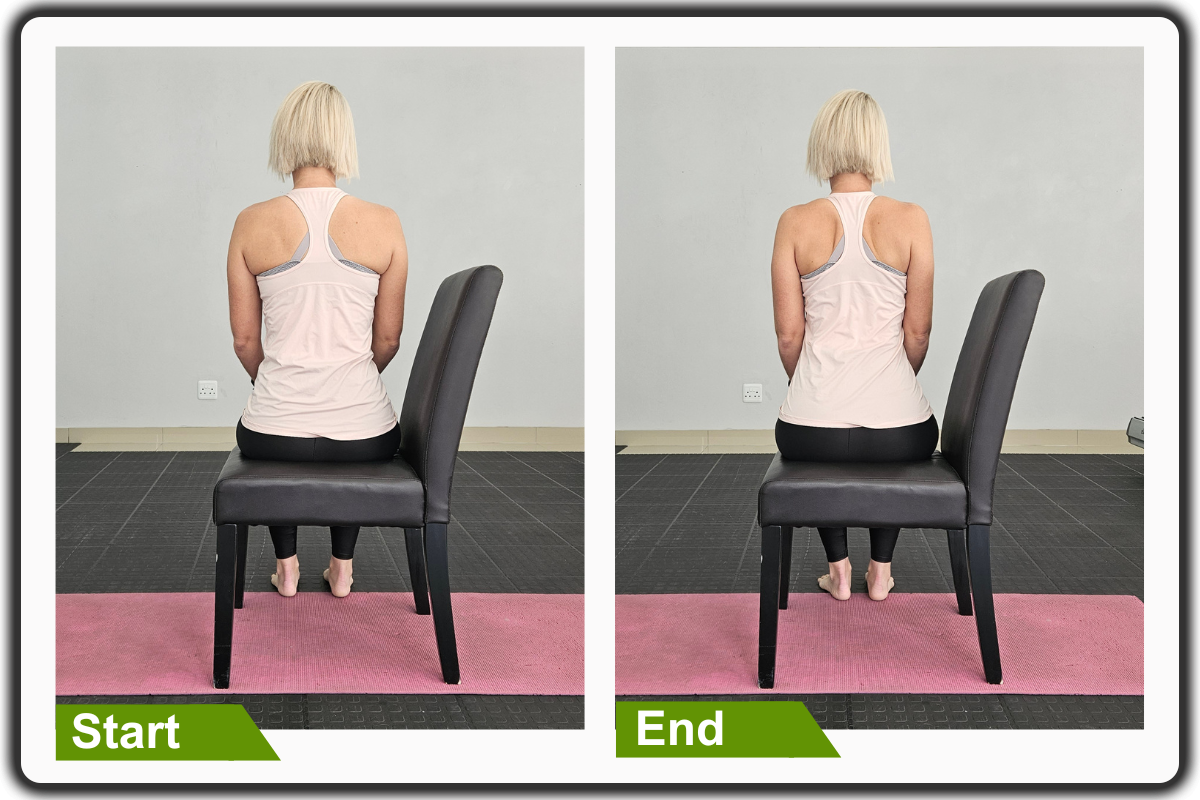
- For this exercises for costochondritis, begin in an upright sitting position on the chair, maintaining good alignment with your upper body.
- Place your hands on your thighs and keep your shoulders relaxed and down.
- Engage your core. Squeeze your shoulder blades as if you're trying to hold a pencil between them or until you feel a gentle stretch in front of your chest.
- Hold this position for 5-10 seconds, feeling the muscles working.
- Relax and return to the starting position.
- Repeat the movement.
Note: Make sure to keep your neck relaxed and avoid shrugging your shoulders.
2. Breaths
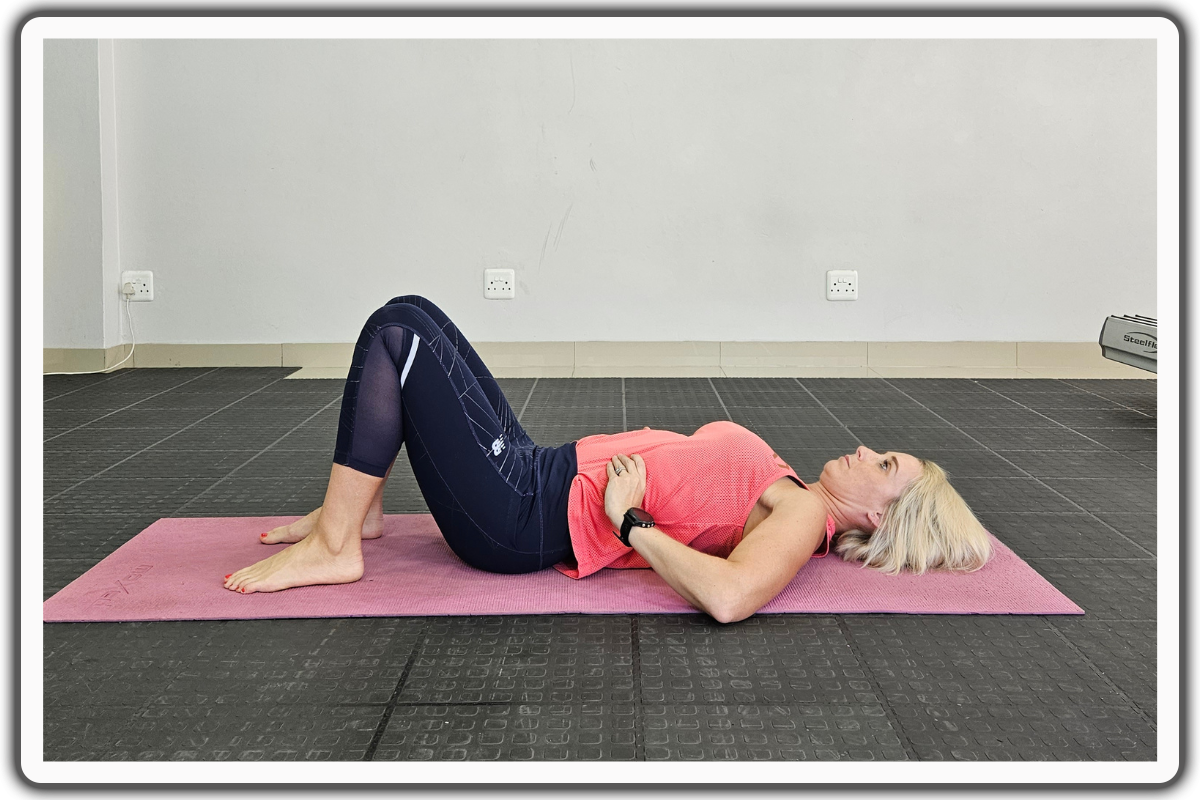
- Lie on your back with knees bent and your feet flat on the floor wider than hip-width apart.
- Tuck your tailbone and place one hand on your chest and the opposite over your belly.
- Shift your heels to point your toes inward and let your knees fall inward.
- Hold this position for several deep belly breaths, in through your nose and out through your mouth.
- Relax and return to the starting position.
3. Baby Cobra Pose
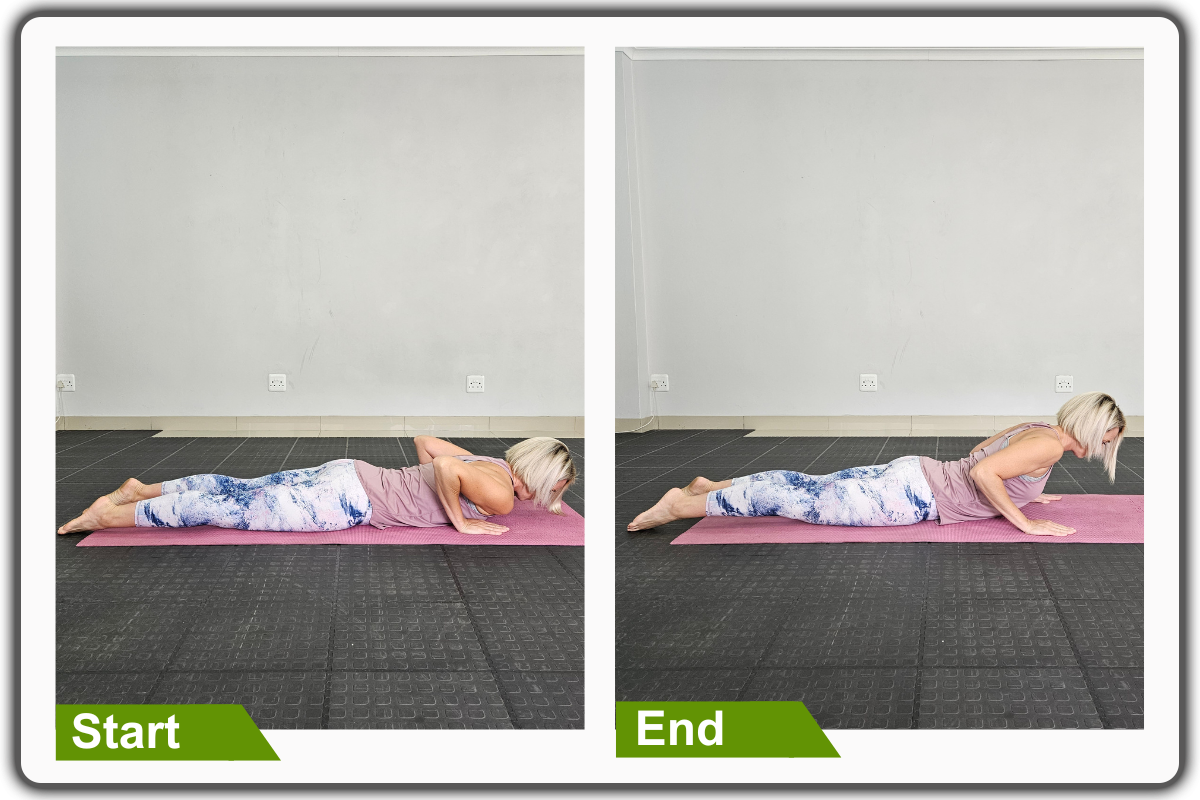
- For this exercises for costochondritis, lie on your stomach with your feet shoulder-width apart, while maintaining good alignment with your head, shoulders, hips, and legs.
- Place your hands at your sides at chest level.
- Contract your abdominal muscles.
- Breathe in, then press up and arch your back using your hands as support, squeezing your shoulder blades together.
- Hold this position for several deep belly breaths, in through your nose and out through your mouth.
- Slowly lower your chest to the floor, returning to the starting position.
- Repeat the movement.
4. Chest Opener
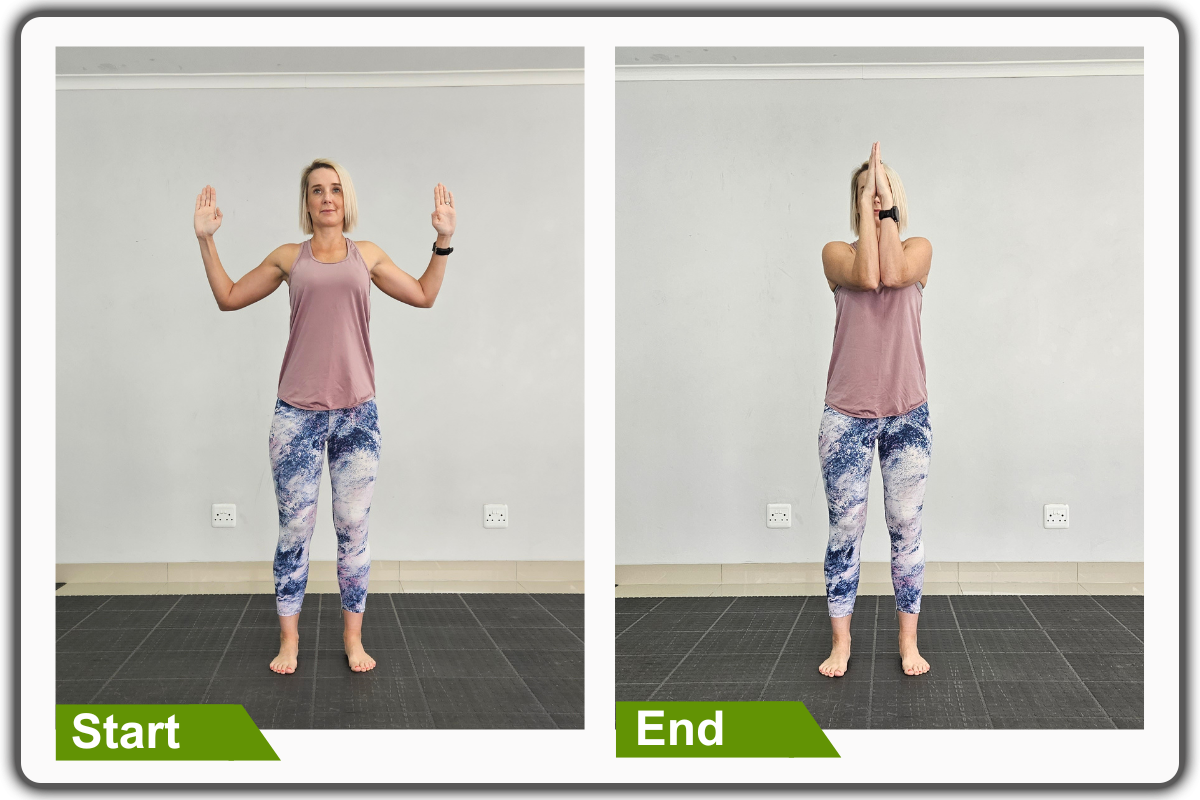
- Begin in an upright standing position with your feet hip-width apart, maintaining good alignment with your head, shoulders, and hips.
- Place your arms at your side, with elbows bent at chest height and fingers pointing upward.
- Engage your core and gently squeeze your shoulder blades together.
- As you loosen the squeeze, bring the forearms and elbows close together.
- Repeat the movement in 15 repetitions.
5. Child's Pose
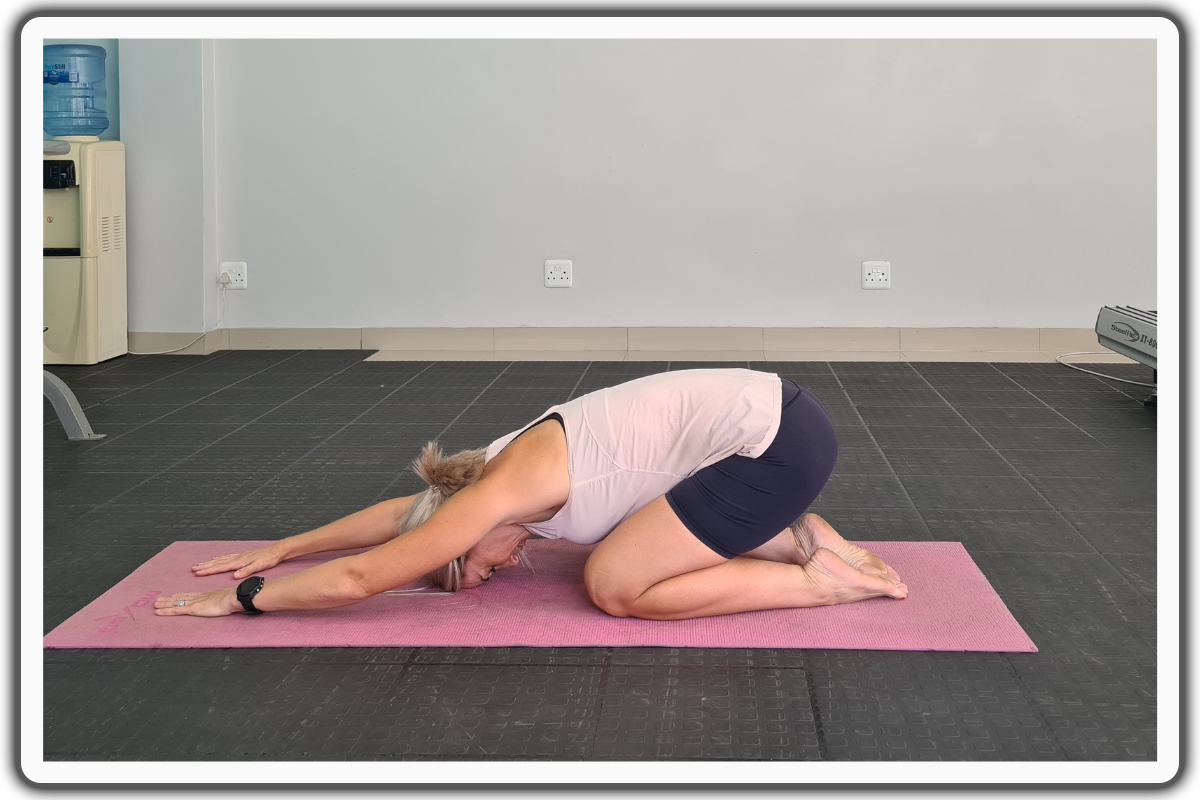
- For this exercises for costochondritis, begin in a 4–point position with your knees below your hips and your hands beneath your shoulders.
- Tighten your abdominal area.
- Shift your hips back to your feet and extend your arms in front.
- Drop your forehead on the floor, relaxing your mid-back area for a light stretch.
- Hold this position for several deep belly breaths, in through your nose and out through your mouth.
- Return to the starting position.
Diagnosing Costochondral Joint Pain
Physical Examination and Medical History: Diagnosis is typically made through physical examination, medical history, and imaging tests such as X-rays or CT scans.
Imaging Studies (X-rays, CT Scans, etc.): Imaging studies are used to rule out other possible causes of chest pain, such as heart attack, lung disease, bacterial infections, or pain occurring after postoperative thoracic surgery.
Differential Diagnosis: Costochondritis is often misdiagnosed as a heart condition, such as myocardial infarction, due to similar symptoms.
Treatment and Relief Options

Nonsteroidal anti-inflammatory drugs (NSAIDs) and anti-inflammatory medications may be used to manage pain and inflammation.
Gentle movements applied to the spine [⁵] and third rib to relieve pain
A quick, controlled push on the spine
Specific movement over the right third rib while turning the upper body
Exercises to improve shoulder control
These treatments helped reduce pain and improve the patient's ability to use their right arm.
Risk Factors and Prevention
Identifying High-Risk Groups: Individuals with a history of chest trauma or underlying medical conditions, such as rheumatological disorders or phosphorus deficiency, may be at higher risk for developing costochondral joint pain.
Preventing Costochondral Joint Pain: Maintaining a healthy lifestyle, including regular exercise and a balanced diet, may help prevent costochondral joint pain.
Conclusion
Costochondral joints are a common source of chest pain, making accurate diagnosis and treatment essential for effective pain relief. Incorporating targeted exercises for costochondritis into the treatment plan is crucial for managing costochondral joint pain.
These exercises for costochondritis, improve flexibility, enhance chest mobility, and help reduce discomfort. Regular exercise not only aids in immediate pain relief but also helps prevent long-term complications, ultimately improving the patient's quality of life.
References
- Ellis, E. III, & Carlson, D. S. (1986). Histologic comparison of the costochondral, sternoclavicular, and temporomandibular joints during growth in Macaca mulatta. Journal of Oral and Maxillofacial Surgery, 44(4), 312-321. https://doi.org/10.1016/0278-2391(86)90082-0
Chummun, S., McLean, N. R., Anderson, P. J., & David, D. J. (2013). A long-term evaluation of 150 costochondral nasal grafts. Journal of Plastic, Reconstructive & Aesthetic Surgery, 66(11), 1477-1481. https://doi.org/10.1016/j.bjps.2013.07.004
Mott, T., Jones, G., & Roman, K. (2021). Costochondritis: Rapid Evidence Review. American Family Physician, 104(1), 73-78. https://www.aafp.org/pubs/afp/issues/2021/0700/p73.html#diagnosis
Disla, E., Rhim, H. R., Reddy, A., Karten, I., & Taranta, A. (1994). Costochondritis: A prospective analysis in an emergency department setting. Archives of Internal Medicine, 154(21), 2466–2469. https://doi.org/10.1001/archinte.1994.00420210106012
Rabey, M. I. (2008). Costochondritis: Are the symptoms and signs due to neurogenic inflammation? Two cases that responded to manual therapy directed towards posterior spinal structures. Manual Therapy, 13(1), 82-86. https://doi.org/10.1016/j.math.2006.12.007
